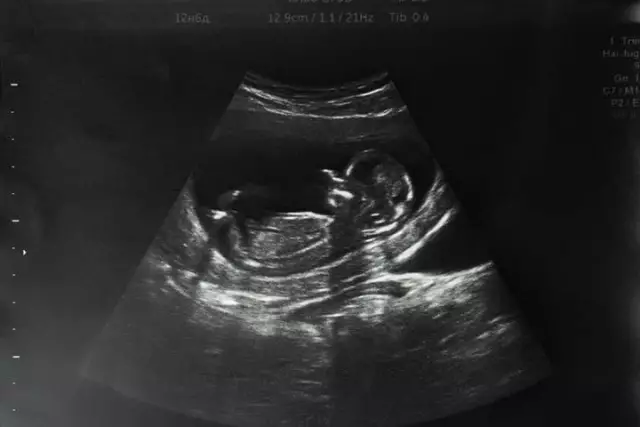- Author Curtis Blomfield [email protected].
- Public 2023-12-16 20:44.
- Last modified 2025-01-23 17:01.
Every pregnant woman knows how important the placenta is. Despite the fact that this is a temporary body, its importance cannot be overestimated. The placenta delivers oxygen and nutrition to the baby. After the next planned study on an ultrasound machine, sometimes women are informed that the placenta is located along the anterior wall of the uterus. So what does this mean? Is it the norm? And will it harm the baby?

Of course, any specialist can assure that the placenta located on the anterior wall is not a pathology. This will in no way affect the course of pregnancy and the birth process. By the way, the placenta is such a peculiar organ that can attach itself as and where it pleases. Most often, it is located in pregnant women, nevertheless, on the back wall of the uterus. In rare cases, it can attach to the fundus of the uterus. And sometimes incomprehensibleFor reasons, it is located at the exit from the uterus, thereby partially or completely blocking the baby's path for independent birth. This already applies to pathology, in which case a planned caesarean section is prescribed.
In general, if the placenta is located on the front wall, then you should not worry too much. In the first trimester, you can hear from the doctor that the presentation is too close to the exit of the uterus. But this is no cause for concern. If this diagnosis is made at 6-8 weeks, then no one will remember about it at 25-26 weeks. As the pregnancy progresses, the placenta moves up. Therefore, during childbirth, it will not interfere with the child at all.

But still, how dangerous is the location of the placenta along the anterior wall? There is one caveat: the whole point is that with a caesarean section (if necessary), the incision will pass exactly at the location of the placenta. This is fraught with complications such as bleeding. But before the operation, doctors clarify the location and try not to bring to a profuse blood loss.
This is probably the only thing to worry about (but not too much!) if you have an anterior placenta. It is worth noting another important fact. During a second pregnancy, the placenta is often attached just at the site of the old caesarean suture on the uterus. This is the only feature worth paying attention to in subsequent pregnancies.

A woman expecting a baby should know howthe placenta is located - on the front wall or on the back. And also to clarify in advance whether it will interfere with childbirth. But, as a rule, if a woman has a risk of any problems, then she is placed in the hospital a few weeks before the expected date of birth. This is necessary to prevent complications from both the child and the woman. So it can be argued that a pregnancy with an anterior placenta will not be at least something different from everyone else. The birth will be uneventful and will end with a he althy, strong baby.
In some countries there are very interesting customs associated with the placenta. After birth, she is not taken away, but given to a young mother. According to custom, it must be taken to your home and buried under a tree. But in our country, it is inspected and then disposed of.






